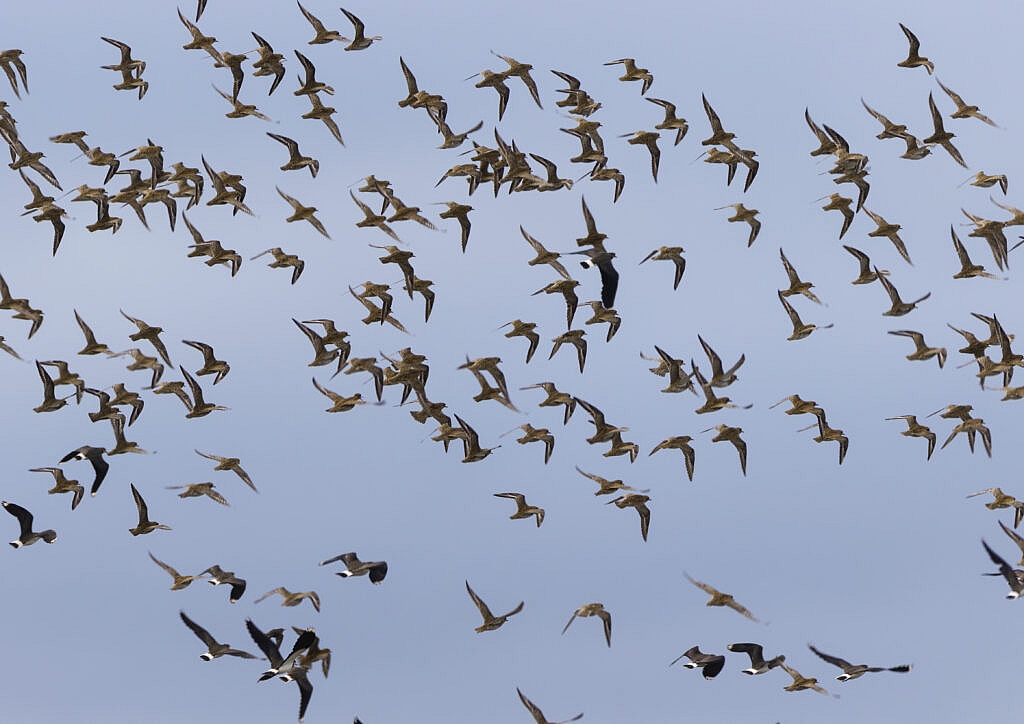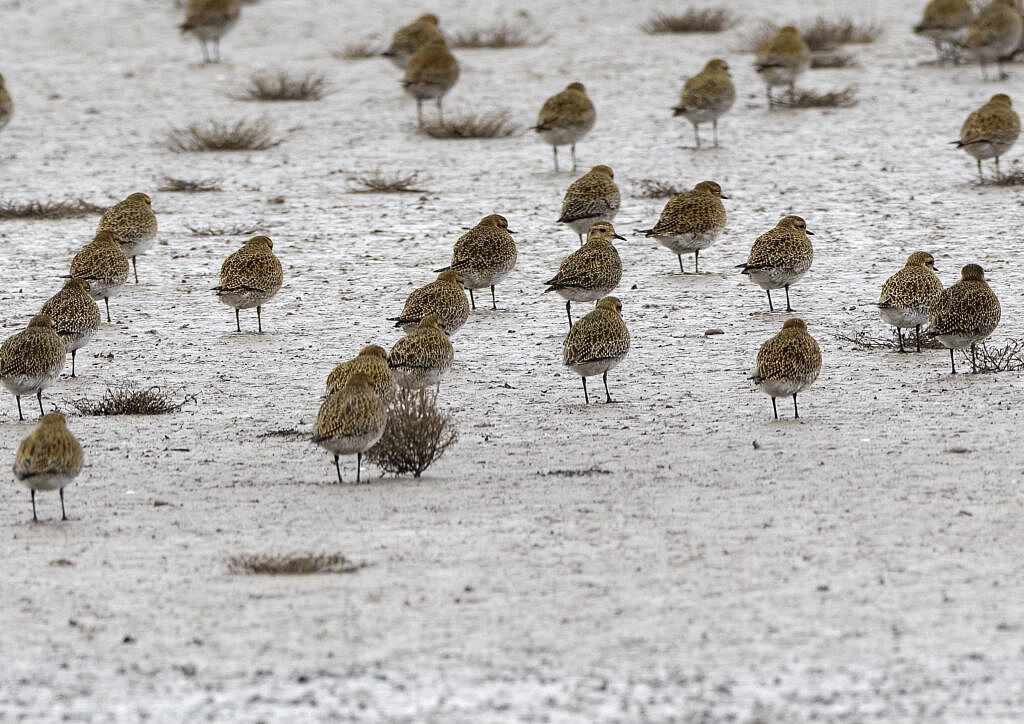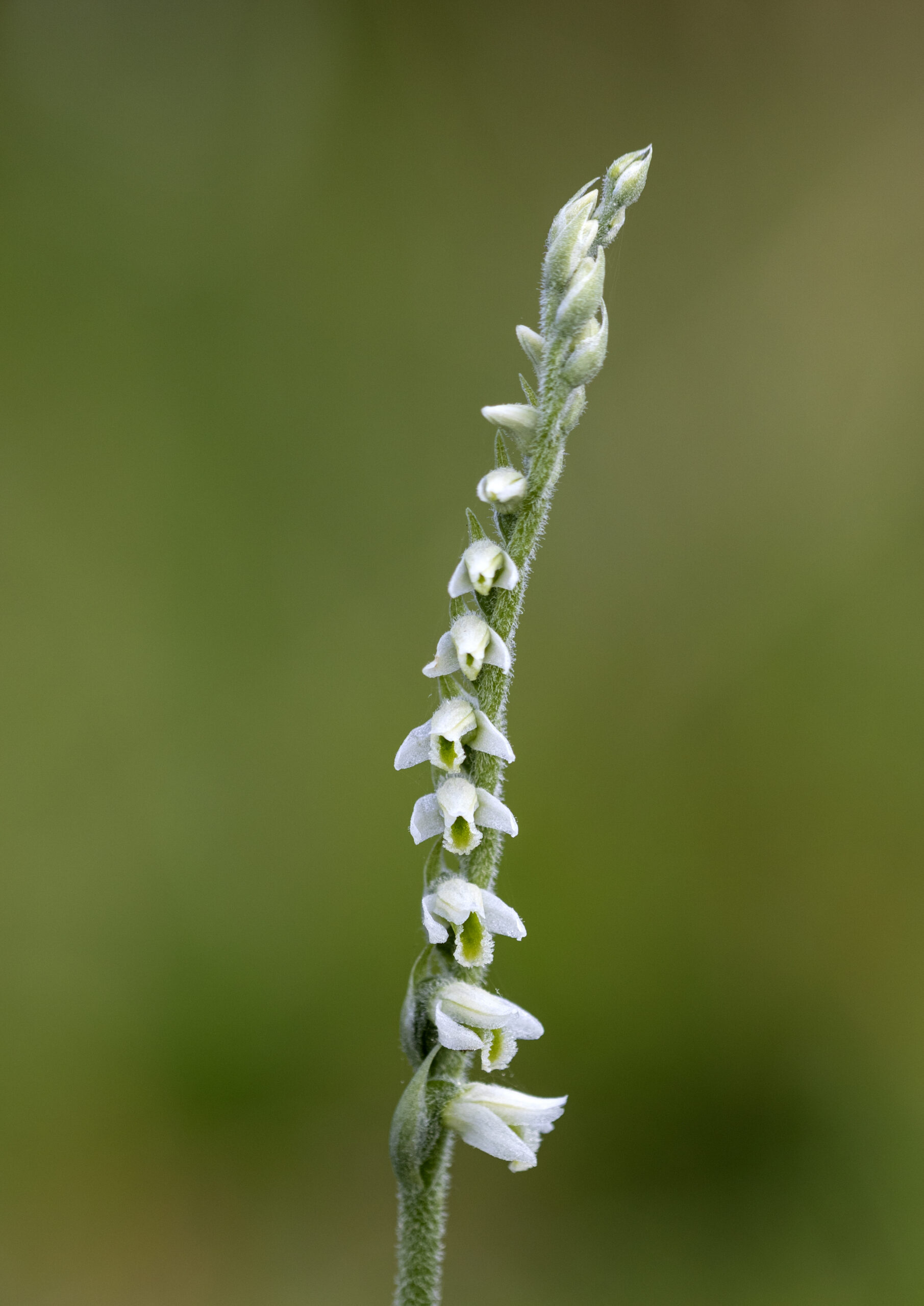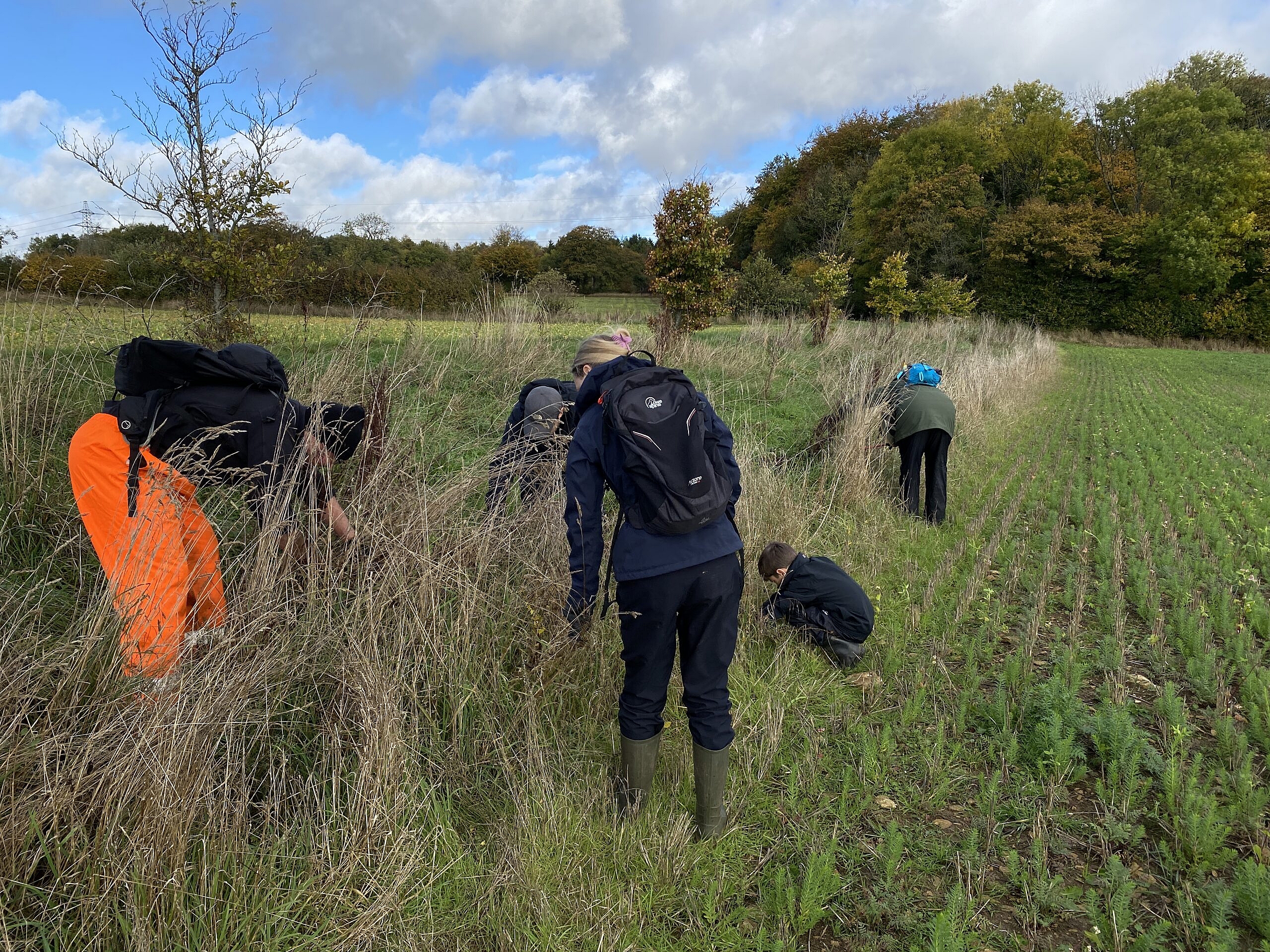
It is an odd relationship. You always find Golden Plover in the company of Lapwing, but you don’t always find Lapwing in the company of Golden Plover. It is as if the Golden Plover, a flighty, twitchy bird always living on its nerves, needs the reassurances of Lapwings around it, while Lapwing are quite relieved to spend a day away from them. At rest, the Plover surround themselves with Lapwing, living in the centre of the flock, as if the Lapwing are their safety fence. And it may well be so. I call Lapwing “flapwing” for way in which their oversized wings flap in flight. They have oddly-shaped wings which are bulbous and rounded on the end, as if someone took a normal bird’s wing and then decided to add a slice of football on the end. When they fly, the impression is always a large number of pillowcases being shaken out in a breeze. They don’t fly, they flap. Their old country name is “pee-wit” after their calls, but to my mind “flapwing” is a much better moniker, and I’m sticking with it. But these large, flappy wings mean Lapwing are slow to get off the ground. Still quick enough, but nowhere near as fast as the Plover, who seem to be like passengers at an airport, picking at food with their bags packed and ready to run to the gate the moment the number is called. And it seems to be called often. It must be exhausting to be a Golden Plover. They fly at the drop of a hat. I mean literally. Any real or imagined half-movement, any slightly nervous twitch, and Lapwing lifting because of some neighbourly dispute over a patch of mud, and the Plover are gone, pouring up from the ground like hot smoke. Their movement inevitably startles the Lapwing, who seem to look around them, see no cause of danger, shrug, and then lift to te sky on the ”better safe than sorry” principle. It may be that this is exactly what the Plover want. Remember the old joke about someone not needing to run fast when faced with a lion, just faster than the person next to them? That may be the Golden Plover’s strategy, to lift first and fastest, leaving whatever marauders there are to pick off a fine meal of slow-off-the-mark flapwing while the cloud of plovers are already a thousand feet up, barely visible specs in the sky.

On the ground, flapwing and Plover practice a feathery apartheid, rarely intermixing. But in the air, they take that to a whole new level, literally. While the lapwing turn and fat and bustle around in small quasi-murmurations near the ground, rushing over my head like a temporary aerial stream, the Plover climb and climb and climb, until they flow around the sky as a great flowing tide of greyness against the brightness of the sky, the individual birds barely visible. When they eventually return, it is like a large jet trying to land. They land, and bounce away again as one of their number disturbs a Lapwing who disturbs the whole flock again, over and over until gradually the whole flock of Plover lands in a mass of twitchy, nervous waiting. And there they stand, never seeming to feed, standing in a socially-distanced huddle, each bird keeping enough space before it to get to the air in a hurry again, which they do moments later as the shadow of a tree waves in a suspicious manner or a distant car drives along a road or simply one of their number feels an urgent need to leave this flock and look for a safer one. They are exhausting and wonderful to watch by turns until the Spring when they migrate back up to the North of the UK to breed on the upland moors. Given the winds in Scotland that constantly ruffle the vegetation, I wonder how they stand it.






Social Profiles